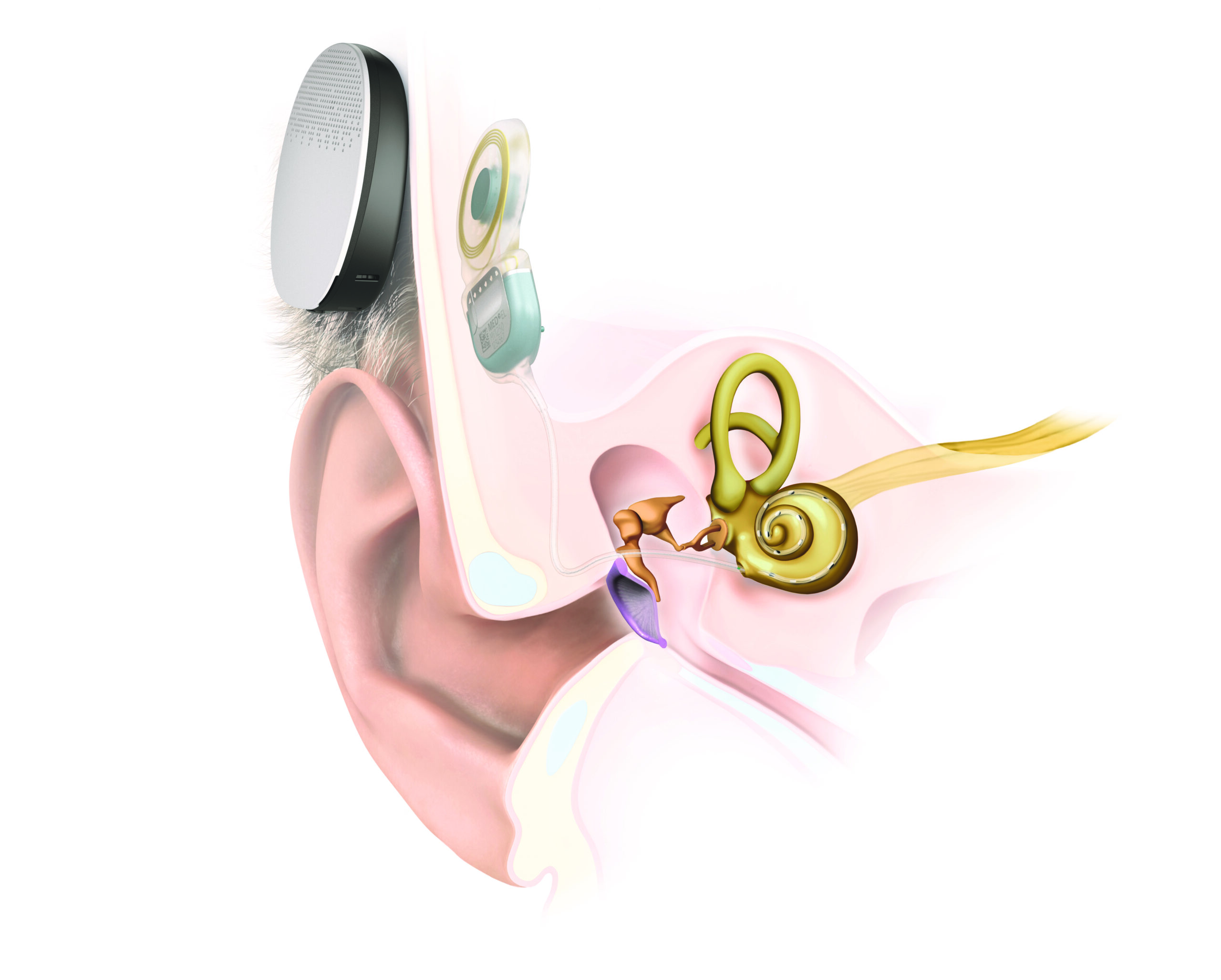How can a cochlear implant replace a sense of hearing
Milions of people worldwide are affected by hearing loss. When a conventional hearing aid is no longer sufficient due to the severity of hearing loss, the cochlear implant (CI) offers a solution. But how does the CI enable hearing in profoundly hearing impaired or even deaf people?

In profound sensorineural hearing loss or deafness, the hair cells in the inner ear are damaged and cannot properly process and transmit sound information.
A cochlear implant surpasses the defect hair cells and sends the information signals in a form of coded electrical impulse to the auditory nerve or brain, where these are interpreted as acoustic events. As the brain receives and processes these information within a very short period of time, they are practically perceived at the moment when they occur.
A cochlear implant (CI) consists of two main parts:
- the outer part, the audio processor with transmitting coil
- the inner part, the implant with the electrode arrey
The audio processor picks up the sound information and sends it to the implant via the transmitting coil, which is connected to the implant by a magnet. It is located behind the ear, under the skin and transmits the pulse patterns to the electrode array, which is inserted directly into the cochlea. The auditory nerve receives these electric impulses and transmits them to the auditory center in the brain. The brain perceives these signals as sounds.
Mehr über Cochlea-Implantate
Find out more about the necessary surgery here!

You are reading:















